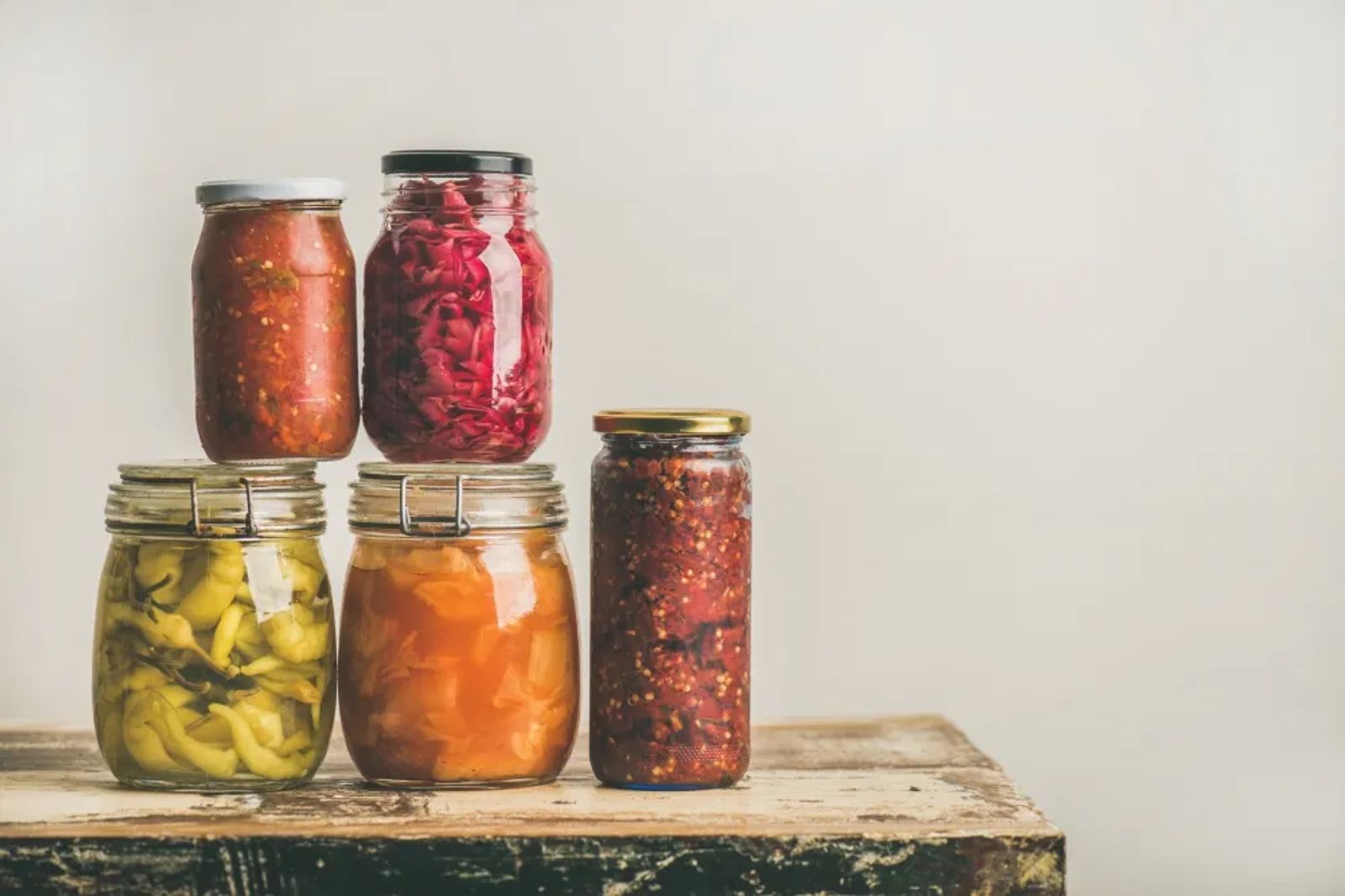
Fermenting Vegetables
August 2021
by anna rogers
Fermenting vegetables is the gift that keeps on giving. This craft preserves, nourishes, and enhances the flavors of your favorite veggies, and it’s easier than you think!
What Is Fermenting?
Fermenting is the chemical process by which carbohydrates (often sugars) are broken down anaerobically (in the absence of oxygen). For foods and beverages, this happens through microbial growth and enzymatic action. This means that fermented foods are alive, and those same microorganisms that are altering the state of the food go to work inside your body, contributing to your overall health.
Why Do We Ferment?
There are all types of fermented foods and beverages – from wine to cheese to sauerkraut. Here we’re focusing on the age-old, traditional method of fermenting vegetables. This preservation technique is so much more than keeping food from spoiling. It enhances flavors, keeps vitamins and minerals alive, extends your season for enjoying local produce, and unlocks a magical culinary world that creates, after a little initial work, a healthy grab-and-go snack or meal addition that’s a staple in your fridge.
Fermented vegetables are an excellent means for keeping probiotics in our diet and maintaining gut health. This means that the addition of fermented vegetables to our everyday lives helps us digest everything else we eat and contributes to our overall immune health.
Fermented vegetables also provide nutrients that are critical to our well-being. Did you know that B12, a necessary vitamin that is extremely difficult to access with a strict vegetarian or vegan diet, is unlocked in the fermentation process?
What Vegetables Can I Ferment?
Fermenting vegetables is done with salt and sometimes the addition of water. No vinegars or starter cultures are needed! And myth buster: cabbage is not the only vegetable that you can ferment! While cabbage is a very popular vegetable for fermenting because the leaves hold a lot of moisture easily drawn out by salt, there are many other vegetables and herbs that can be transformed through fermenting.
Add a little tang and vitality to your root vegetables like beets and carrots. Preserve some of those cucumbers, zucchini, and squash that you can't possibly eat enough of in the summer months. Make a fermented pepper salsa or a fermented parsley leaf chimichurri. Use a brine pickling method to lacto-ferment green beans. You can even ferment cauliflower, sweet potatoes, and celery. The possibilities and flavor combinations are endless!
Where Should I Start?
To continue learning about fermenting vegetables, I recommend the book Fermented Vegetables by Kirsten K. Shockey & Christopher Shockey. This book features creative recipes for fermenting 64 different vegetables and herbs, like IPA Pickles (put that favorite local brew to use!) and Golden Ginger Beets with Lemon. The recipes are easily adaptable, and the processes for preparing and checking on your ferments are thoroughly detailed. Enjoy!
Fermented Foods Pronunciation Guide (Envisioning this as a SIDEBAR)
Why are so many fermented foods and beverages hard to say? Let’s take the mystery out of the lingo so you can speak like a fermenting pro.
- KEFIR = “kuh-feer”
- KOMBUCHA = “kuhm-boo-chuh”
- KIMCHI = “kim-chee”
- MISO = “mee-sow”
- TEMPEH = “tem-pay”
Make sure and check out our website for an East-Meets-West Kimchi recipe.
Originally printed in the August 2021 issue of Simply Local Magazine
Never miss an issue, check out SLM's digital editions here!





